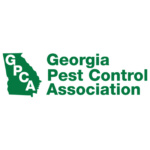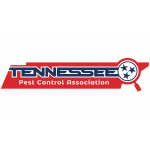What Do Termite Swarms Look Like? A Complete Homeowner’s Guide
Think you spotted a swarm of insects in your backyard, and you’re worried they might be termites? Knowing what termite swarms look like is the first step to protecting your home from these destructive pests. Termite swarms are one of the most obvious signs of a termite infestation, yet identifying them can still feel tricky without a proper understanding.
This blog will walk you through exactly what termite swarms look like, why they happen, and what you should do if you see one near or inside your property. You’ll also learn how to differentiate termites from similar insects, such as flying ants, to avoid unnecessary confusion.
What Is a Termite Swarm?
A termite swarm occurs when winged termites, called “swarmers” or “alates,” leave their colonies to mate and establish new colonies. It’s nature’s way of spreading and ensuring the survival of termite populations.
Swarming is a seasonal event, often triggered by a rise in temperature and humidity, typically after rain. Though it may seem like an alarming event, what you are witnessing is simply the reproductive stage of a termite’s life cycle.
Why Do Termites Swarm?
Termites swarm for two primary reasons:
- To mate: Swarmers emerge from the colony in search of a partner.
- To establish new colonies: Reproductives disperse to find suitable environments for starting new termite colonies.
These tiny winged insects don’t travel far but instead focus on environments conducive to their survival—typically areas with moisture, wood, or soil contact.
What Do Termite Swarms Look Like?
Spotting and correctly identifying a termite swarm can help you act quickly to address a potential infestation. Here are some defining characteristics to look out for:
1. Appearance of Termite Swarmers
- Size: Termite swarmers are typically small, around 1/4 to 1/2 inch in length.
- Color: Their bodies range in color depending on the species. Subterranean termite swarmers are usually black or dark brown, while drywood termites may appear tan or light brown.
- Wings: A termite swarmer’s most distinctive feature is its wings. These are:
-
- Long and translucent
- Equal in size (unlike flying ants)
- Delicately veined
- Detached easily, often leaving behind piles of wings near windowsills or entry points.
2. Behavior During a Swarm
Termites swarm in large groups, creating what looks like a swirling cloud of insects. Swarms don’t last long—often just 30 minutes to a few hours—but can be quite a spectacle while they occur.
The majority of the swarmers won’t survive; they’ll either get eaten by predators like birds or fail to find suitable nesting spots. Observing this activity outside your home is less concerning than finding it happening indoors, which signals a more serious issue.
3. Where Termite Swarms Typically Occur
- Outdoors: Near tree stumps, moist soil, or woodpiles.
- Indoors: Around light sources such as windows or near entry points where these pests can squeeze inside.
If swarmers are inside your home, it’s often a sign of an active termite colony nearby or right under your feet.
How to Differentiate Termite Swarms from Flying Ants
Termites aren’t the only insects that form swarms. Flying ants are often mistaken for termite swarmers due to their similar appearance. Knowing the key differences can save you unnecessary stress or expenses.
Key Differences Between Termites and Flying Ants:
- Body Shape:
-
- Termites have straight, uniform bodies.
- Flying ants have a narrow, pinched waist.
- Antennae:
-
- Termites have straight, bead-like antennae.
- Flying ants have bent, elbowed antennae.
- Wings:
-
- Termites have wings of equal size.
- Flying ants’ forewings are larger than their hindwings.
By closely inspecting the insect’s body features, you can determine whether it’s termites or ants that you’re dealing with. However, if the distinction isn’t clear, contacting a professional pest control service is your best bet.
What Should You Do If You Notice a Termite Swarm?
Seeing a termite swarm can be unsettling, but it’s important to act quickly and effectively. Follow these steps if you spot one:
1. Remain Calm
A swarm doesn’t cause immediate structural damage. Termites are simply looking for nesting grounds. However, their presence signals that colonies might already be nearby.
2. Document the Activity
Take pictures or videos of the insects and any piles of discarded wings. This documentation will help pest control professionals identify the species and determine the severity of the problem.
3. Inspect Your Home
Check windowsills, baseboards, and foundations for signs of:
- Piles of wings
- Mud tubes
- Wood damage (hollowed-out wood or bubbling paint)
4. Call a Pest Control Expert
Even if it’s just one swarm, a professional inspection is crucial. Instead of relying on over-the-counter solutions, certified exterminators use targeted treatments to address infestations safely and effectively.
5. Take Preventive Measures
Reduce your risk of future swarms by:
- Sealing cracks and gaps in your home’s foundation
- Removing moisture sources like leaky pipes or clogged gutters
- Keeping firewood and wood debris away from your home’s exterior
- Scheduling routine termite inspections
Why Identifying Termite Swarms Early Is Critical
Termites cost homeowners in the US billions of dollars in damages annually. Early identification and action can save your property from becoming part of this statistic. By recognizing termite swarms for what they are, you can prevent further destruction to your home’s structural integrity.
Remember, termite damage isn’t usually covered by home insurance, making early intervention even more essential.






